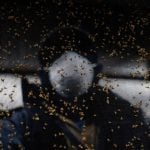Animal welfare during transport is a hot topic, and so Alberta Farm Animal Care is conducting a cattle benchmarking project that will track the condition of animals arriving at auction marts and abattoirs.
“There’s a lot of talk around transport and what’s happening with animals,” said Angela Greter, the organization’s executive director. “We hear a lot of anecdotal comments from people off the cuff, but we don’t know what is really happening.
“So we need to do a proper study about that, rather than just listening to stories. If we can really see that there are problems, then we can address them.”
Read Also

Grazing ‘sweet spot’ boosts pasture performance
Timing-focused approach to pasture management touted to boost forage growth, livestock gains while also cutting farmer labour and inputs
The study aims to identify shipping conditions that may be detrimental to animals and establish a baseline that can be improved upon.
“We’re also looking at associated risk factors, so we’re looking to capture how long an animal is in transport, what kind of truck they were travelling in, the weather and other factors,” said Greter. “We will then try to relate those potential risk factors to the conditions we’re seeing so we can get a better picture of what’s going on.”
The study is being led by Karen Schwartzkopf-Genswein, a research scientist with Agriculture and Agri-Food Canada in Lethbridge, and will build on her recent study on animal transport and compromised cattle.
“This project is almost like a followup on that one because what she didn’t capture in that was the arrival of animals at auctions,” said Greter.
Data collection will begin later this month or in early September and will continue for a year to capture data in all seasons. Final results should be available in about a year and a half.
Ottawa contributed $268,000 to the project, and additional support came from Alberta Beef Producers, Alberta Milk, the Alberta Cattle Feeders, Alberta Auction Markets Association, the provincial government, and the Canadian Food Inspection Agency.
















